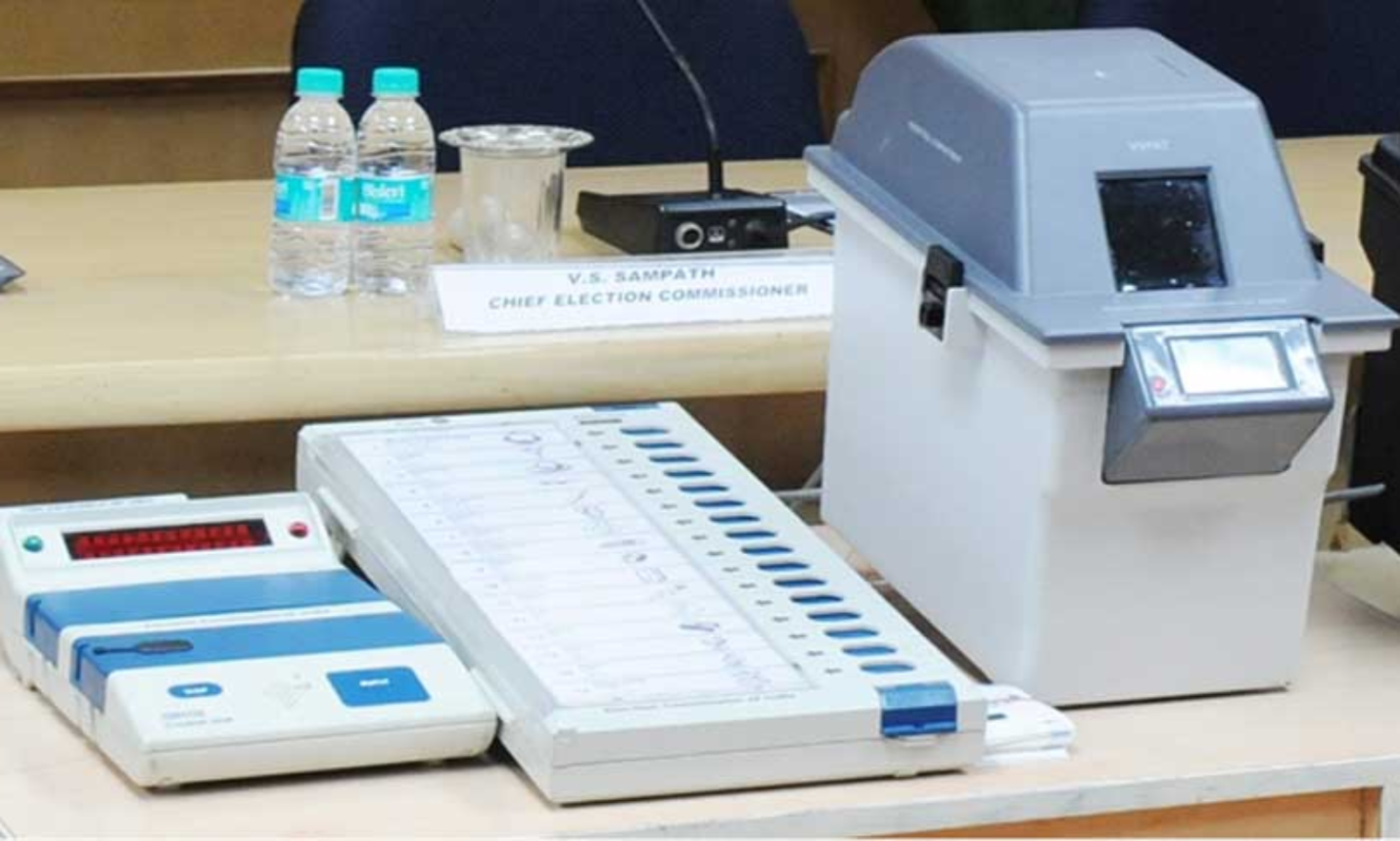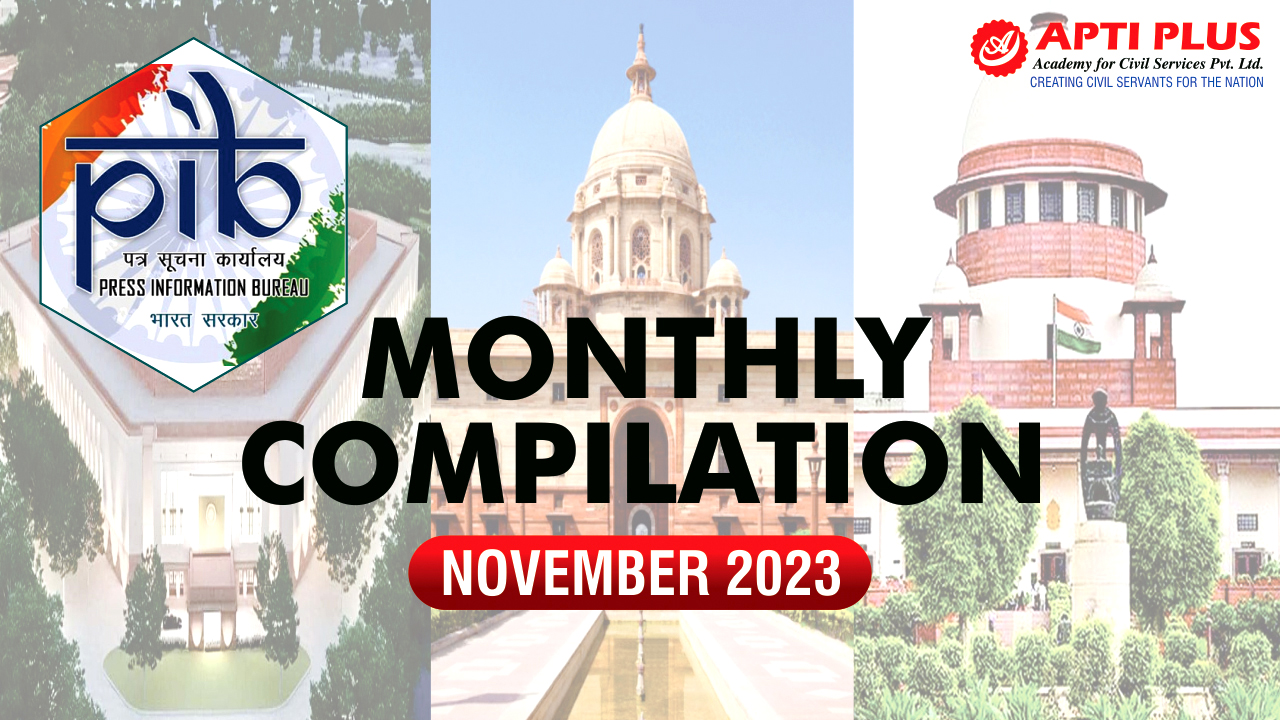Description

Copyright infringement not intended
Picture Courtesy: www.livelaw.in
Context: India is gearing up for the 2024 Lok Sabha elections, which are expected to be the largest democratic exercise in the world. More than 900 million voters will cast their ballots using Electronic Voting Machines (EVMs).
Details
- VVPATs, or Voter Verifiable Paper Audit Trails, are machines attached to Electronic Voting Machines (EVMs). When a voter casts a vote using an EVM, the VVPAT prints a paper slip displaying the voter's choice. This slip remains visible behind glass for a few seconds, allowing the voter to verify their choice before it gets deposited into a box.
- Initially conceptualized in 2010, the idea underwent trials and revisions until its final approval in 2013. The VVPAT was gradually introduced into elections, with 100% coverage starting from the 2019 Lok Sabha elections.
- As for counting VVPAT slips, the Election Commission (EC) began with counting a minimal percentage, gradually increasing it due to demands from political parties. Initially, one polling station per Assembly constituency was counted, which later increased to 5% of Assembly seats following a Supreme Court judgment in 2019.
- The opposition parties demand a 100% count of VVPAT slips. They propose handing the slip to the voter for verification and then placing it in a separate ballot box, advocating that this process would restore confidence in the electoral process.
- The EC, in response, opposes 100% verification, citing concerns of time consumption, and potential human errors, and likening it to a regressive step towards manual ballot systems.

Voter Verifiable Paper Audit Trail (VVPAT)
- Voter Verifiable Paper Audit Trail (VVPAT) is a method of providing feedback to voters using a ballotless voting system.
- A VVPAT is intended as an independent verification system for voting machines designed to allow voters to verify that their vote was cast correctly, to detect possible election fraud or malfunction, and to provide a means to audit the stored electronic results.
- It contains the name of the candidate (for whom the vote has been cast) and the symbol of the party/individual candidate.
Background
- The idea of VVPAT was first proposed by the Election Commission of India (ECI) in 2010 after several political parties raised concerns about the reliability and security of Electronic Voting Machines (EVMs). The ECI conducted several field trials and demonstrations of VVPAT machines in different states and sought feedback from various stakeholders.
- In 2013, the Supreme Court of India directed the ECI to implement VVPAT in a phased manner, and in 2017, the court ordered the ECI to use VVPAT along with EVMs in all future elections.
Features
- A VVPAT machine is a printer-like device attached to the EVM. When a voter presses the button on the EVM against the chosen candidate, the VVPAT machine prints a paper slip with the serial number, name and symbol of the candidate.
- The slip is visible to the voter for seven seconds through a transparent window in the VVPAT machine, after which it is automatically cut and dropped into a sealed drop box.
- The slip can be accessed only by the polling officers in case of a recount or an audit.

Significances
- It allows voters to verify that their votes are cast as intended and prevents any discrepancy or manipulation in the recording of votes by the EVMs.
- It provides a means to audit the stored electronic results and enables cross-checking of votes in case of any dispute or suspicion.
- It serves as an additional barrier to changing or destroying votes by corrupt or malfunctioning voting machines or personnel.
- It enhances voter confidence and trust in the electoral system and reduces the scope for allegations or complaints against EVMs.
Steps taken
- The ECI has procured more than 16 lakh VVPAT machines from two public sector undertakings, Bharat Electronics Limited (BEL) and Electronics Corporation of India Limited (ECIL), at a cost of around Rs 3,000 crore.
- The ECI has conducted extensive training and awareness programs for polling officials, security personnel, political parties, candidates and voters on the use and operation of VVPAT machines.
- The ECI has introduced a randomization process for the allocation and distribution of EVMs and VVPATs to ensure impartiality and secrecy.
- The ECI has mandated that at least one polling station in each assembly constituency will be randomly selected for counting of VVPAT slips along with EVM votes, as per the Supreme Court's direction.
- The ECI has also developed a technical protocol for counting VVPAT slips in case of any mismatch or discrepancy between EVM and VVPAT results.
Challenges
- The VVPAT machines are prone to technical glitches, malfunctioning, jamming or printing errors due to various factors such as faulty hardware, software bugs, power fluctuations, environmental conditions, human errors or sabotage.
- The VVPAT machines require more maintenance, storage space, security arrangements and transportation costs than EVMs alone.
- The VVPAT machines increase the time and complexity of the voting process, as voters have to wait for the paper slip to appear and verify it before leaving the polling booth.
- The VVPAT machines may not be fully effective in ensuring voter verification, as some voters may not check or understand the paper slip properly, or may not report any discrepancy or complaint to the polling officials.
- The VVPAT machines may not be sufficient to resolve all disputes or doubts about the election results, as the counting of paper slips is limited to a few polling stations and is subject to human errors or manipulation.
Way forward
The VVPAT system is a valuable addition to the electoral system of India, as it enhances the accuracy, transparency and credibility of the voting process. However, it also requires constant improvement and innovation to overcome its challenges and limitations. Some of the possible measures that can be taken are:
- The ECI should ensure adequate testing, quality control, calibration and certification of the VVPAT machines before and after each election, and replace or repair any faulty or defective machines promptly.
- The ECI should conduct regular training and refresher courses for polling officials, security personnel, political parties, candidates and voters on the use and operations of VVPAT machines, and address any queries or grievances effectively.
- The ECI should increase the random sampling and counting of VVPAT slips along with EVM votes, and adopt a scientific and transparent method for selecting the polling stations for this purpose.
- The ECI should develop a robust and secure protocol for counting VVPAT slips in case of any mismatch or discrepancy between EVM and VVPAT results, and ensure proper documentation and verification of the process.
- The ECI should also explore other technological solutions or alternatives that can complement or replace the VVPAT system, such as end-to-end verifiable voting systems, blockchain-based voting systems, or paper-based voting systems with optical scanners.

Conclusion
- VVPAT is widely considered a best practice for ensuring the integrity and reliability of electronic voting systems. However, it also poses some technical and operational challenges that need to be addressed carefully. Therefore, it is important to conduct thorough testing and evaluation of VVPAT systems before implementing them in large-scale elections, as well as to ensure adequate legal and regulatory frameworks for their use and verification.
Must Read Articles:
Voter Verifiable Paper Audit Trail (VVPATs): https://www.iasgyan.in/daily-current-affairs/voter-verifiable-paper-audit-trail-vvpats
|
PRACTICE QUESTION
Q. What are the key considerations and challenges in the ongoing debate on electoral reform in India, particularly concerning the demand for 100% verification of VVPAT slips, and how can the electoral system be adapted to enhance transparency and public trust while maintaining efficiency?
|
















